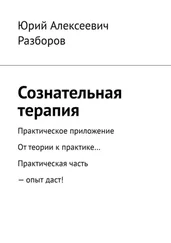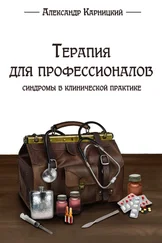Kächele H., Buchheim A., Schmücker G. & Brisch K. H. (1999). Entwicklung, Bin-dung und Beziehung – Neuere Konzepte zur Psychoanalyse. In: H. Helmchen,
F. A. Henn, H. Lauter & N. Sartorius (Hrsg.). Psychiatrie der Gegenwart. Berlin– Stuttgart: Springer, 605–630. Klein M. (1983a). Bemerkungen über einige schizoide Mechanismen. In: Dies., Das
Seelenleben des Kleinkindes. Stuttgart: Klett-Cotta, 131–163.
Klein M. (1983b). Das Seelenleben des Kleinkindes, Stuttgart: Klett-Cotta.
Klein M. (1983c). Die Bedeutung der Symbolbildung für die Ichentwicklung. In: Dies., Das Seelenleben des Kleinkindes. Stuttgart: Klett-Cotta, 36–54. Köhler L. (1992). Formen und Folgen früher Bindungserfahrungen. Forum der Psychoanalyse, 8, 263–280.
Köhler L. (1995). Bindungsforschung und Bindungstheorie aus der Sicht der Psychoanalyse. In: G. Spangler & P. Zimmermann (Hrsg.). Die Bindungstheorie. Grundlagen, Forschung und Anwendung. Stuttgart: Klett-Cotta, 67–85.
Köhler L. (1998). Zur Anwendung der Bindungstheorie in der psychoanalytischen Praxis. Psyche, 52, 369–403. König K. (1981). Angst und Persönlichkeit. Das Konzept vom steuernden Objekt und seine Anwendungen. Göttingen: Medizinische Psychologie.
Kömer J. (1998). Einfühlung: Über Empathie. Forum der Psychoanalyse, 14, 1–17.
Kohler E., Keysets C., Umiltà M. A., Fogassi L. & Rizzolatti G. (2002). Hearing sounds, understanding actions: Action representation in mirror neurons. Science, 297, 846–848.
Kohut H. (1971). Narzißmus. Frankfurt/M.: Suhrkamp.
Kohut H. (1973). Überlegungen zum Narzißmus und zur narzißtischen Wut. In: Die Zukunft der Psychoanalyse. Frankfurt/M.: Suhrkamp, 252–285. Kohut H. (1977). Die Heilung des Selbst. Frankfurt/M.: Suhrkamp. Kreppner J. M., O’Connor T. G., Rutter M. and the English and Romanian Adoptees
(ERA) Study Team (2001). Can inattention/overactivity be an institutional deprivation syndrome? Journal of Abnormal Child Psychology, 29, 513–528.
Kroesen S., Kügel C., Thaler D., Wörle S. & Brisch K. H. (2003). Traumaerfahrungen und posttraumatische Belastungen bei Kindern in stationärer pädiatrischer Behandlung. In: U. Lehmkuhl (Hrsg.). Therapie in der Kinder– und Jugendpsychiatrie: Von den Therapieschulen zu störungsspezifischen Behandlungen. Göttingen: Vandenhoeck & Ruprecht, 35.
Kübler-Ross E. (1974). Interviews mit Sterbenden. Stuttgart: Kreuz-Verlag.
Kügel C., Kroesen S., Thaler D., Wörle S. & Brisch K. H. (2003). Bindungsstörungen bei Kindern in stationärer pädiatrischer Behandlung. In: U. Lehmkuhl (Hrsg.). Therapie in der Kinder– und Jugendpsychiatrie: Von den Therapieschulen zu störungsspezifischen Behandlungen. Göttingen: Vandenhoeck & Ruprecht, 35.
Kühle H.-J., Hoch C., Rautzenberg P. & Jansen F. (2001). Kurze videogestützte Verhaltensbeobachtung von Blickkontakt, Gesichtsausdruck und Motorik zur Diagnostik des Aufmerksamkeitsdefizit/Hyperaktivitätssyndrom (ADHS). Praxis der Kinderpsychologie und Kinderpsychiatrie, 50, 605–621.
Laewen H.-J., Andres B. & Hédervári É. (1990). Ein Modell für die Eingewöhnungs – situation von Kindern in Krippen. Berlin: Fl-Verlag.
Lakatos K., Toth L., Nemoda Z., Ney K., Sasvari-Szelsky M. & Gervai J. (2000). Dopamine D4 receptor (DRD4) gene polymorphism is associated with attachment disorganization in infants. Molecular Psychiatry, 5, 633–637.
Lakatos K., Nemoda Z., Toth L., Ronai, Z., Ney K., Sasvari-Szekely M. & Gervai J. (2002). Further evidence for the role of the dopamine D4 receptor (DRD4) gene in attachment disorganization: Interaction of the exon III 48-bp repeat and the521 C/T promotor polymorphisms. Molecular Psychiatry, 7, 27–31.
Lakatos K., Nemoda Z., Birkas E., Ronai Z., Kovacs E., Ney K., Toth I., Sasvari-Szekely M. & Gervai J. (2003). Association of D4 dopamine receptor gene and serotonin transporter promoter polymorphisms with infants’ response to novelty. Molecular Psychiatry, 8, 90–97.
Lamb M. E., Gaensbauer T. J., Malkin C. M. & Schultz L. A. (1985). The effects of child maltreatment on security of infant-adult attachment. Infant Behavior & Development, 8, 35–45.
Lamott E., Pfäfflin E., Ross Th., Sammet N., Weber M. & Frevert G. (1998). Trauma, Beziehung und Tat. Bindungstheoretische Rekonstruktion interpersonaler Beziehungserfahrungen von Frauen, die getötet haben. Monatsschrift für Kriminologie und Strafrechtsreform, 81, 235–245.
Lanczik M. (1997). «Mother and Baby-Units» an psychiatrischen Krankenhäusern in Großbritannien. Spektrum, 26, 38–40.
Laucht M. (2003). Vulnerabilität und Resilienz in der Entwicklung von Kindern. Ergebnisse der Mannheimer Längsschnittstudie. In: K. H. Brisch & T. Hellbrügge (Hrsg.). Bindung und Trauma. Risiken und Schutzfaktoren für die Entwicklung von Kindern. Stuttgart: Klett-Cotta, 53–71.
Laucht M., Esser G. & Schmidt M. H. (1998). Frühe Mutter-Kind-Beziehung: Risikound Schutzfaktor für die Entwicklung von Kindern mit organischen und psychosozialen Belastungen: Ergebnisse einer prospektiven Studie von der Geburt bis zum Schulalter. Vierteljahrszeitschrift für Heilpädagogik und ihre Nachbar gebiete, 66, 1–11.
Lehtonen J. (1994). From dualism to psychobiological interaction. A comment on the study by Tenari and his co-workers. The British Journal of Psychiatry, 164, 27 f.
Lichtenberg J. D. (1989). Psychoanalysis and motivation. Hillsdale, NJ: The Analytic Press.
Lichtenberg J. D., Lachmann F. M. & Fosshage J. L. (1992). Self and motivational systems. Toward a theory of psychoanalytic technique. Hillsdale, NY: The Analytic Press.
Lieberman A. F. & Pawl J. H. (1988). Clinical applications of attachment theory. In:
J. Belsky & T. Nezworsky (Hrsg.). Clinical implications of attachment. Hillsdale, NJ: Erlbaum, 327–347.
Lieberman A. F. & Pawl J. H. (1990). Disorders of attachment and secure base behavior in the second year of life: Conceptual issues and clinical intervention. In:
M. T. Greenberg, D. Cicchetti & E. M. Cummings (Hrsg.). Attachment in the preschool years. Chicago: The University of Chicago Press, 375–398. Lieberman A. F. & Pawl J. H. (1993). Infant–parent psychotherapy. In: C. H. Zeanah (Hrsg.). Handbook of infant mental health. NY–London: Guilford Press, 427–442.
Lieberman A. F. & Pawl J. H. (1995). The treatment of disorders of attachment at the infant–parent program. In: J. Belsky & T. Nezworski (Hrsg.). Clinical implications of attachment. Hillsdale, NJ: Erlbaum, 336–346.
Lieberman A. E., Weston D. R. & Pawl J. H. (1991). Preventive intervention and outcome with anxiously attached dyads. Child Development, 62, 199–209.
Liotti G. (1991). Insecure attachment and agoraphobia. In: C. M. Parkes, J. Stevenson-Hinde & P. Marris (Hrsg.). Attachment across the life cycle. London–NY: Tavistock, 216–233.
Liotti G. (1992). Disorganized/disoriented attachment in the etiology of the dissociative disorders. Dissociation, 4, 196–204.
Liu D., Diorio J., Tannenbaum B., Caldji C., Francis D., Freedman A., Sharma S., Pearson D., Plotsky P. M. & Meaney M. J. (1997). Maternal care, hippocampal glucocorticoid receptors, and hypothalamic-pituitary-adrenal responses to stress. Science, 1659–1662.
Lorenz K. (1943). Die angeborenen Formen möghcher Erfahrung. Zeitschrift für Tierpsychologie, 5, 235–409.
Lorenz K. (1965). Der Kumpan des Vogels. In: Ders., Über tierisches und menschliches Verhalten. Aus dem Werdegang der Verhaltenslehre. Gesammelte Abhandlungen. München: Piper, 235–409.
Lyons-Ruth K. (1996). Attachment relationships among children with aggressive behavior problems: The role of disorganized early attachment patterns. Journal of Consulting and Clinical Psychology, 64, 64–73.
Lyons-Ruth K. (2008). From infant attachment disorganization to adult dissociation. Vortrag bei der 1. Bi-Annual Conference European Society for Trauma and Dissociation (ESTD) Amsterdam: 18 April.
Читать дальше
Конец ознакомительного отрывка
Купить книгу






